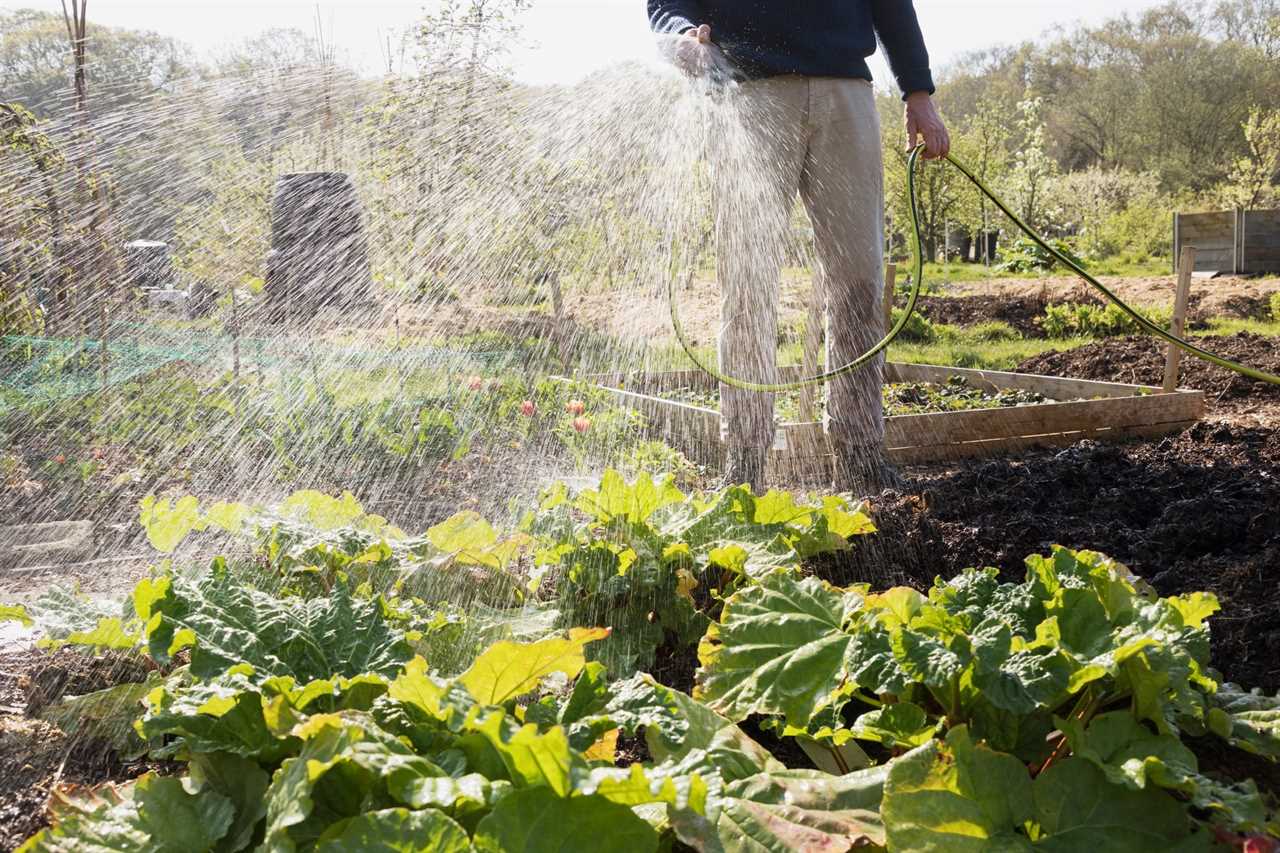You’ve planted your vegetable garden and watered in the little seedlings. Wouldn’t it be great to simply walk away and let Mother Nature water your garden with one inch of reliable rainfall each week?
It would be great, but it’s unlikely! You’ll need a plan to water your garden when it doesn’t rain enough. Fortunately, you don’t need any fancy equipment.
Decide How You’ll Water Your Garden
There are all kinds of watering options. The one you choose depends on how much time you have and how much you want to spend.
Hand watering
For smaller gardens, watering by hand may be the easiest, most affordable method of ensuring your garden doesn’t dry out. You can use a watering can or a garden hose.
When using a watering can, it’s easy to mix in a liquid fertilizer you apply as you water. You can also fertilize with a sprayer attachment on a hose.
Overhead sprinklers
For larger gardens, you may decide to use sprinklers, like those for watering lawns. There are two main types: oscillating and rotating. These are good for newly-planted gardens before seeds emerge, or when plants are small.
The disadvantage? It isn’t efficient. Some of the water evaporates before hitting the ground. And if there’s a breeze, you may water much more than your garden. It also moistens the leaves of vegetable plants, creating the right conditions for diseases to flourish. If you use this method, water early in the morning to allow time for the foliage to dry before evening.
Drip irrigation systems
A third option is a drip irrigation system, which efficiently delivers the water right to the roots of your plants.
It can take some time to plan the layout and invest in the water lines and fittings. But once it’s set up, it’s effortless. Just turn on the water when needed, or set up a timer to do it automatically.
Soaker hoses
Like drip irrigation systems, soaker hoses deliver moisture directly to the plants, via tiny holes that let water seep out.
To keep the hoses in place, you may need to pin them down with landscape staples. Once you’ve laid out the hoses, just attaching a garden hose and turn on the water.
As with drip irrigation, you may want to use a timer to turn off the system automatically, or set a reminder on your smartphone.
Keep Track of Rainfall
To ensure you don’t overwater your garden, which can be almost as big a problem as underwatering, set up a rain gauge to keep track of rainfall. You can also measure rain by setting out a small empty can about one inch deep. When one is full, that’s enough water for the week.
Check the Soil Before Watering
While one inch of water per week is a rule of thumb, other factors, like your soil type or whether you’ve mulched the garden, can also determine how often you need to water.
Before you decide to water, dig down four to five inches. If it’s dry at that depth, your garden probably needs water.
Water Deeply

Whatever method you choose, remember to water deeply a few times a week rather than just sprinkling a bit daily. As the soil dries out on the surface, the roots will grow deeper, seeking the moisture further down.
Can You Use Grey Water in a Vegetable Garden?
Generally, no. If you know your grey water doesn’t contain chemicals or harsh detergents, you can use it on ornamental plants in times of drought.
Can I Use Rain Barrel Water in a Vegetable Garden?
Yes. However, avoid using water collected in rain barrels on root crops or leafy greens you plan to eat.
Did you miss our previous article...
https://rsssuperfeeds.com/life-hacks/the-best-rv-accessories






